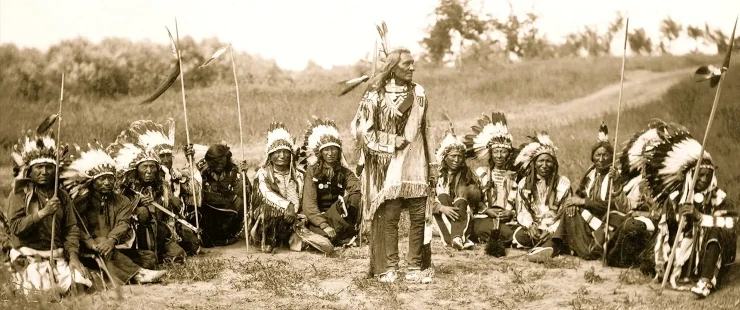


Virtually all the rituals of the North American Indians evoke the past, although they do not always exalt specific events as impressive or exceptional. Western events, such as the celebration of Independence Day, usually commemorate specific events from a recent or distant past that, in any case, are distant from the present.
Native ceremonies and rituals recognize something more than the context in which they are carried out or the representation of the sacred events they include. In line with the traditional idea of “living past,” they honor the past as a present, invisible presence that has an impact on people’s lives.
Ritual recognitions of the past can be extremely simple, individual and personal. For example, sacred Western shoshon women get up before sunrise and pray looking east every morning. Each prayer ends with the phrase: “Now bless the people.” The short “now, then” symbolizes gratitude for sustaining your existence, understanding the natural cycles and remembering your people’s past and path to the future.
Some celebrations, such as potlatch, take the form of traditional community festivals. The songs, dances and sacred rites that make up the potlatch of the kwakiutl have barely changed over the centuries. It also represented the shift of power from one generation to another for many centuries. The new leader is given valuable material objects, such as a large copper bar with a representation of a totemic animal, as a sign of his power and what his ancestors and other beings of the past have transmitted to him.
Other memories combine old elements with new forms. The annual Choctaw Fair, which takes place every summer at the Pearl River Reserve in Mississippi, is an example of celebrating the descendants of those who refused to abandon their ancestral lands in the 19th century. Choctaws across the United States gather to remember their history, traditions, and the way they survived as a nation. This fair, which takes place at about the same time that the choctaws celebrated a ceremony in honour of the maize ripening, includes stories, dances and the traditional ball game known as ishtaboli.
Although relatively new, the Indian-Esquimal Olympic Games, held in Fairbanks, Alaska, each year, include ancient elements. The nodule jump, an exercise in which participants jump on the ground, backed on the nodules while imitating the movements of a fox lying on an ice tap, is one of the traditional activities that takes place during the four days of the program. Many spectators and participants are Inuit and urban Indians, for whom games and accompanying activities are a fundamental way to connect with traditional culture.
 Native American Cultures: Myths and magic
Native American Cultures: Myths and magic
You can purchase this book on Amazon.
This book challenges deep-seated stereotypes and offers an enriching perspective that contributes to a more comprehensive and respectful appreciation of the indigenous peoples of North America. Through an understanding of their myths and beliefs, we are taking an important step toward cultural reconciliation and the recognition of the diversity that has enriched the history of this continent.
These mythical stories, many of them linked to the literary genre of fantasy, reveal a world where the divine and the human intertwine in narratives that explain the cosmic order, creation, and the fundamental structure of the universe. Discover how these sacred tales bear witness to the deep connection of the natives with nature and spirituality.
Native Americans: Population and Territories
Native Americans: Cultures, customs, worldview
Traditions, myths, stories and legends